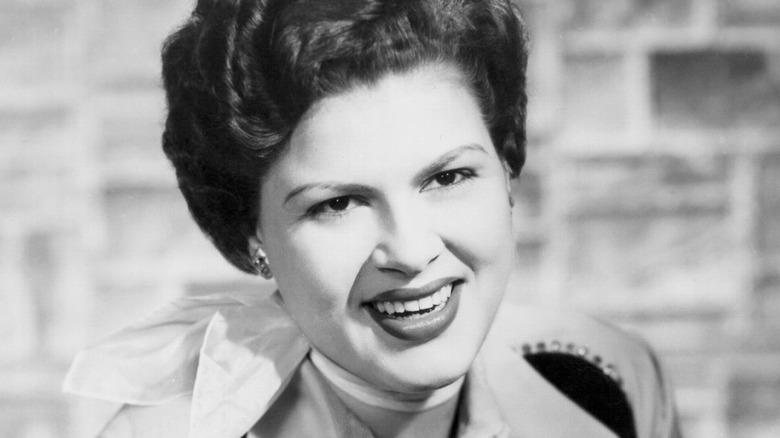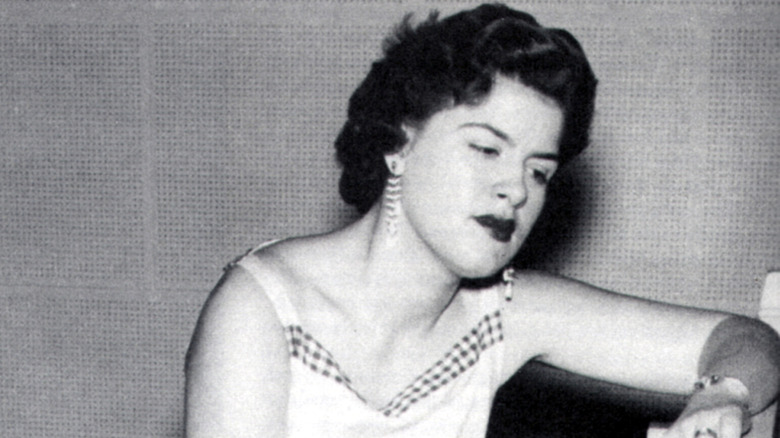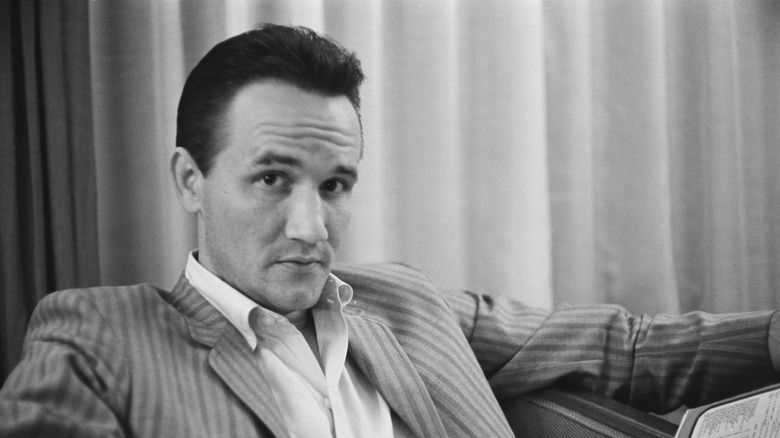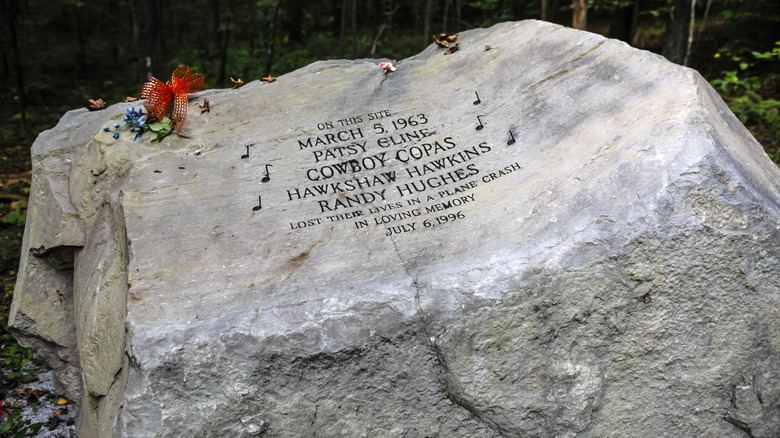Things Found At Patsy Cline's Death Scene
A farmer heard an engine sputter and then stop followed by the sound of a crash. Jerry Phifer, the police dispatcher who received the call about a plane crash and one of the first people at the scene, recalled the evening of March 5, 1963, in Benton County, Tennessee. It was "rainy, kind of foggy, and misty" with "the wind blowing" and streaks of lightning ripping across the sky, he told the television show "Friends and Company" in 1996. "It wasn't a very good night to be flying, I think," he said.
Soon, Phifer and the rest of the world learned the terrible news — a true music legend had been on that plane. Country star Patsy Cline was dead, as were her fellow Grand Ole Opry performers Cowboy Copas and Hawkshaw Hawkins, and Cline's manager, Randy Hughes, who was piloting the small plane when it smashed into a wooded hill near Camden, Tennessee.
At the crash site, searchers found the mangled remains of Cline and the others — the men were so unrecognizable the police were only able to identify them by the IDs in their wallets, which were still in their pockets. Amid the scattered wreckage, the searchers also found an array of clothing and other items.
The crash was due to pilot inexperience
The plane was a 1960 Piper Comanche PA-24 aircraft, and though Randy Hughes had only had his pilot's license for 10 months prior to the crash, he had shuttled Patsy Cline around several times before. On that fatal evening, Hughes had a mere 117 hours of flying time under his belt, and just three of those were done at night. Per Tom LeCompte, a pilot, plane owner, and history writer, it's likely those were done during training. Though the weather created poor flying conditions, Hughes talked with Cline and the other two passengers, and they agreed to go for it. Cline was sick and they all were tired and just wanted to get home.
It was dusk when the plane took off just after 6 p.m. that night. Hughes seemed to have a rough time of it. He was not an instrument-rated pilot, and he was unaccustomed to flying in dark, inclement weather. No issues were found with the plane in the wreckage, but Per History Net, LeCompte quoted the reason for the crash: "non-instrument pilot attempted visual flight in adverse conditions, resulting in loss of control." The tragedy was due to the "judgment of the pilot in initiating flight in the existing conditions."
In Camden, Tennessee, a seasoned aviation expert named Sam C. Ward heard the low-flying plane and knew it sounded too close — so close that he went outside to see what was happening. He said the plane was roughly 300 feet above ground and he figured it was probably lost and trying to recalibrate, but in no time the plane started flying at a 45-degree angle toward the Earth. Then, there was a flash of light in the distance, "a dull crash, and thereafter, complete silence," Ward said, according to Falling Stars: Air Crashes that Filled Rock and Roll Heaven."
The site of Patsy Cline's death was a shocking scene
It was about 6 a.m. the next morning when cotton farmer W. J. Hollingsworth — the man who'd called the dispatcher the evening before — and his son stumbled upon the crash site, per The Tennessean. The scene was too much for Hollinsworth. "I nearly had a nervous breakdown when I ran down and saw the bodies," he told the newspaper. When a reporter asked if they could account for four bodies, a member of the Civil Defense answered, "There's not enough to count," per the Associated Press. "I happened to look down, and I was standing on a piece of flesh," Jerry Phifer told "Friends and Company." "I got to looking around, and all there was was flesh. Just pieces. ... We found more of Patsy Cline than anyone else."
The small Comanche 250 airplane that had been carrying Cline and the others to Nashville from Kansas City, Kansas, where they'd performed a benefit concert, had sliced through a tall oak before smashing into the ground. In its wake was a 6-foot-deep crater and a 300-foot debris path.
Roger Miller said he was the first at the crash
Singer-songwriter Roger Miller says he was the first person at the site of the crash. He and his friend Don allegedly headed to the area at around 3:30 a.m. after hearing of the news and searched for almost two hours before coming across the wreckage.
"An officer asked me to lead the way," he told author Ellis Nassour, per "Honky Tonk Angel: The Intimate Story of Patsy Cline." "As fast as I could, I ran through the woods screaming their names — through the brush and the trees, and I came up over this little rise, oh, my God, there they were."
"I walked up to it and wanted to turn back," he said, per Nassour's "Patsy Cline." It was ghastly. That's the only way to describe it. The plane had crashed nose-down."
The death scene eventually became a hotspot for looters. News of the crash drove such opportunists to the area, and after the bodies were removed, they scavenged what they could.
The things found at Patsy Cline's crash site tell a tragic story
Beside the plane wreckage and the human remains, searchers found a white belt with "Hawkshaw Hawkins" written in gold next to a black and white cowboy boot, per The Tennessean. The boot's mate lay nearly 20 feet away next to the broken neck of Hawkins' guitar. A muddy gold slipper, which Patsy Cline had likely been wearing at the time of her death, lay on the ground. High overhead, a red slip hung from a tree. Cline's confederate flag lighter and her manager's pocket diary which listed all of her shows and how much she was paid for each were discovered at the scene, along with her silver Elgin wristwatch, a gift from her husband. A photo of the watch (via Rolling Stone) which is at the Patsy Cline Museum in Nashville shows the hands stopped at 6:35. The plane took off at 6:07 p.m. and crashed about 20 minutes later.
Jerry Phifer noted the smashed guitars, amplifiers, and other equipment that littered the scene along with the stars' personal items. "I remember seeing cowboy hats and parts of their rhinestone suits and things of that nature. ... It was a dreadful scene and nothing I'd experienced before and hope to never see again," he told "Friends and Company." The crash site has become a memorial for Cline's memorable life and tragic death, and the location includes a plaque and a bulletin board where her fans can leave messages.




